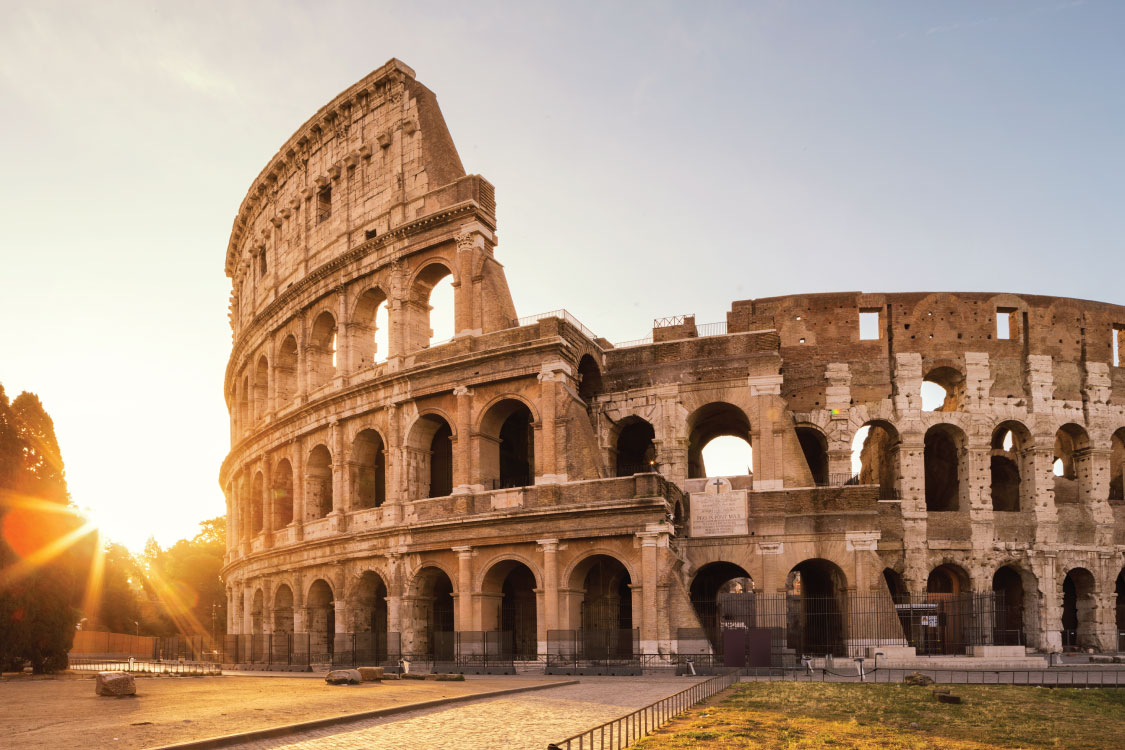Famous Concrete Architecture from Around the World
What is concrete good for? Typically considered as a practical material, concrete has actually been used to create some of the most breathtaking and most famous concrete buildings and architecture around the world. That’s why, this month, Essex Mix is here to explain some interesting facts about the Colosseum, Jubilee Church, Philips Pavilion and other impressive concrete monuments found around the globe.

Pantheon, Rome (126 AD)
The Pantheon is well-known for its impressive domed ceiling measuring 142 feet in diameter and has a 27ft wide opening at the top called the oculus which allows in light, rain and all other types of weather into the building. The Pantheon is made up of three sections:
- Portico with granite columns
- Domed rotunda
- Rectangular space to connect the first and second section
The walls and the floor of the building are embellished with marble and gilt and the massive domed roof consists of five rings of twenty-eight rectangular coffers (a decorative panel along the ceiling).
Colosseum (70 AD)
The Colosseum is an oval amphitheatre that can be found in the centre of Rome, it was built using limestone, volcanic rock and concrete back in 70 AD. At the time, it was the largest amphitheatre to have been built at this time and it was built to accommodate up to 80,000 spectators. Used to gladiatorial contests, animal hunts and dramatics, in the early medieval era and later used for housing and religious order.
Even though it has been gradually broken down by earthquakes and stone-robbers, the majority of the Colosseum still remains and is an iconic symbol of Imperial Rome. This incredibly impressive structure has made the list of one of the New7Wonders of the world. Other structures in the New7Wonders include:
- Petra, Jordan (carved into limestone)
- Machu Picchu, Peru (made from dry-stone walls)
- The Great Wall, the Republic of China (made of boat-building cement, rice and slaked lime)
- Chichén Itzá, Mexico (made of stone)
- Cristo Redentor (Christ the Redeemer statue), Brazil (made from soapstone)
- The Taj Mahal, India (made out of marble)
Christ The Redeemer (1920)
Not all concrete architecture must have walls and a roof to be classed as famous concrete architecture from around the world – which is why Christ the Redeemer makes the list! This 1445 tonne structure found in Rio Janeiro, Brazil is made out of soapstone and reinforced with concrete, and stands 98 feet tall!
Christ The Redeemer took nine years to complete and is the fourth largest statue of Jesus in the world but is the biggest Art Deco-style statue on the planet.
Lake Pontchartrain Causeway (1955)
This gigantic concrete structure found in southern Louisiana, United States, is made up of two parallel bridges supported by 9,500 concrete pilings! The bridge’s total length is 23.83 miles long, and surprisingly, took only 14 months to erect.
Philips Pavilion (1958)
Located in Brussels, the Philips Pavilion was constructed to host a multimedia display in celebration of the post-war technological progress. This impressive structure was made out of reinforced concrete and within it were nine hyperbolic paraboloids and wall speakers coated in asbestos to give the walls texture. Unfortunately, this building was demolished a year later.
Geisel Library (1970)
The Geisel Library is the University of California San Diego’s library, originally named after Audrey and Theodor Seuss Geisel, an American author who was a children’s author, screenwriter, filmmaker, illustrator, poet, political cartoonist and animator. Although it’s built much more recently than the Colosseum, the Geisel Library is a fascinating structure that’s an interesting mix of brutalism and futurism. Geisel Library is made up of 17,000 cubic years of reinforced concrete and 38,000 square feet of plate glass.
Jubilee Church (2003)
Made of Roman travertine and concrete to resemble white marble, the Jubilee Church is found in Rome and is designed in a way to look like a ship with three big, curved walls that increase in height – sort of like a ship’s sail. These three concrete walls control the internal heat of the building to prevent fluctuations in temperature and create an energy-efficient building. The walls of this building contain titanium dioxide to keep the church white and it is said that the cement used breaks down air pollution.
Villa Saitan (2006)
a housing complex in Kyoto, Japan, completed in 2006 by local firm Eastern Design Office—is encased in a concrete shell with undulating cutouts that mimic the roots, trunk, and leaves of a tree.
Science Hills Komatsu (2013)
Found in Japan, Science Hills is an impressive science museum. The building features four broad 3D rolling wave-like concrete structures that blend seamlessly into the green surroundings. This low-rise building has a picturesque backdrop of the faraway grand peaks. This science museum also features a large 3D dome theatre and inside this section, there’s an incubation centre, an experiential learning centre and a local industrial promotion centre. At the very top of this building, there’s a rooftop garden, which enhances the building’s energy efficiency – here there’s a public park where people can enjoy its beauty.
With just a few examples of famous concrete buildings, it’s safe to say that there’s certainly more to concrete than you may originally think. For more updates on concrete architecture and concrete monuments, stay tuned!
Essex Mix provides all types of Concrete Mixes as well as Floor Screed, Aggregates and Topsoil, so get in contact today and we will be able to cater to your needs.
